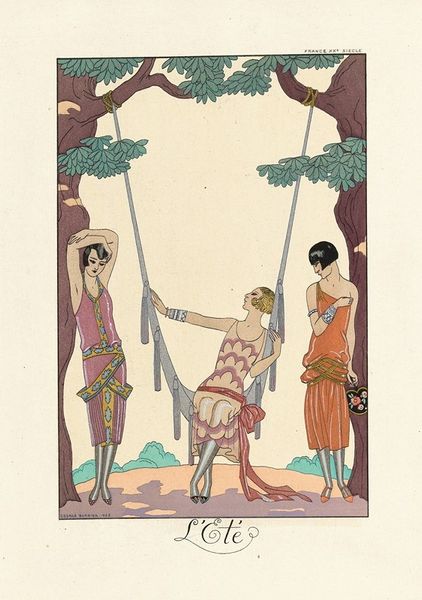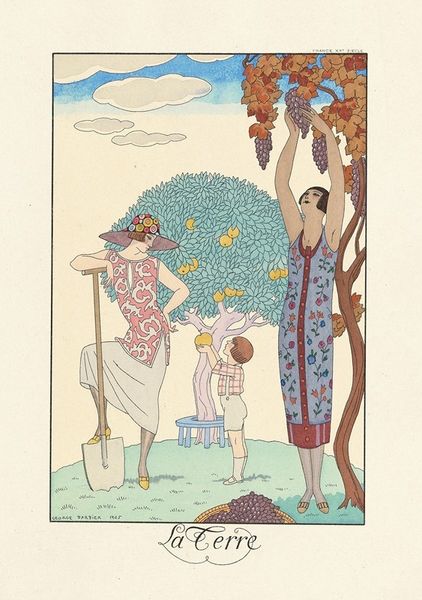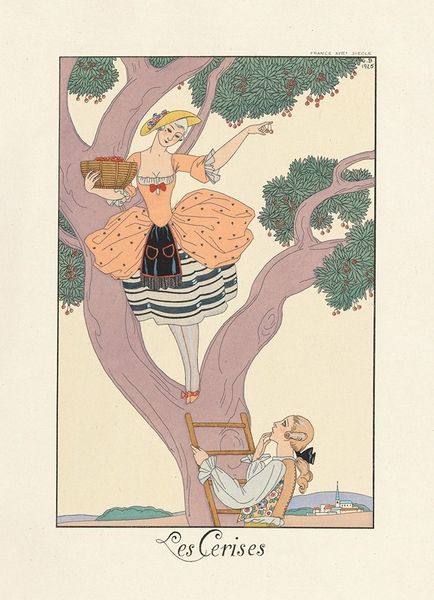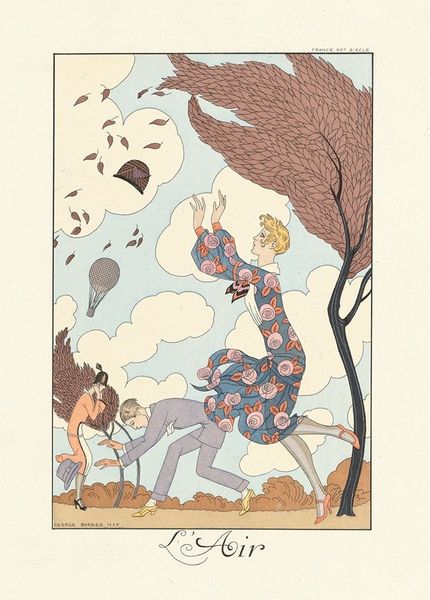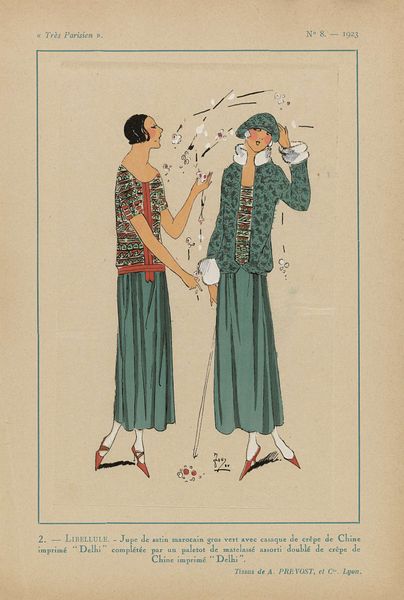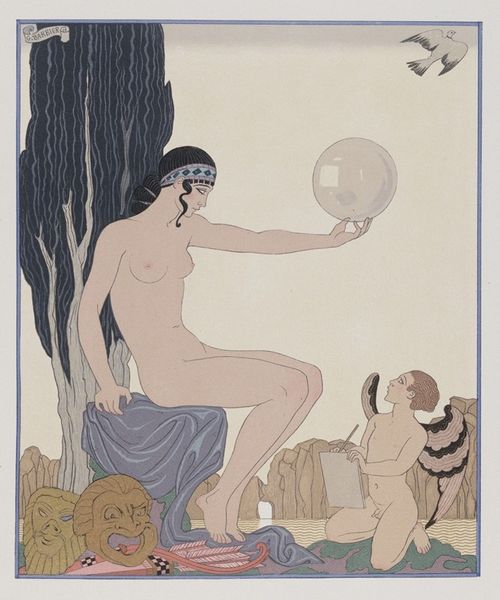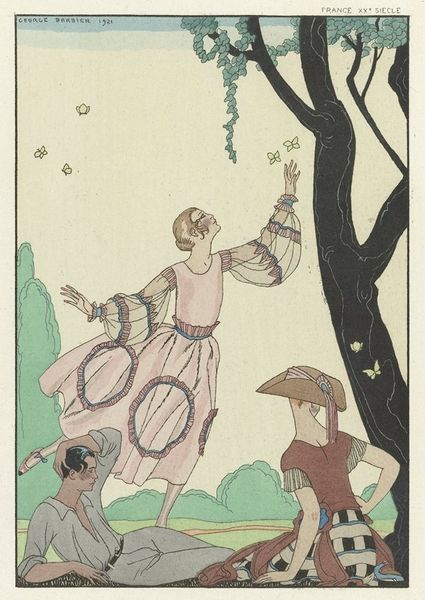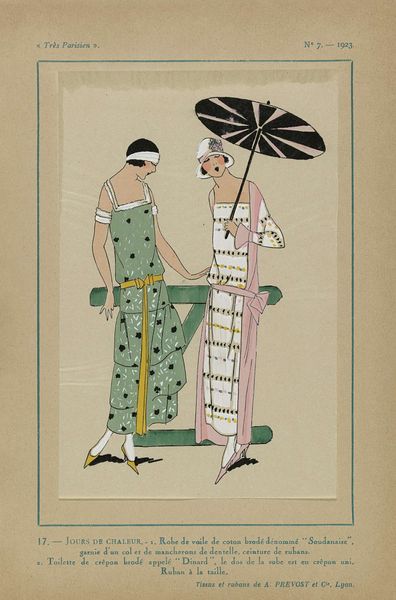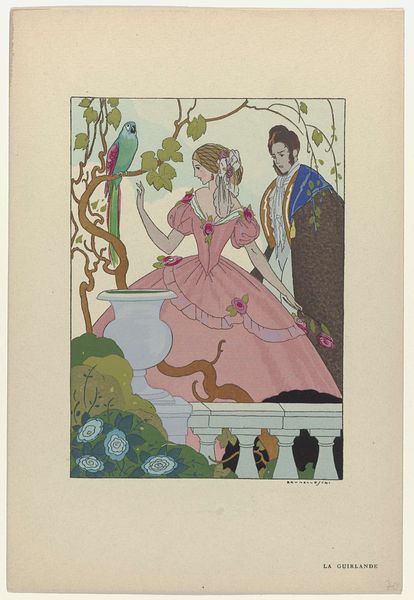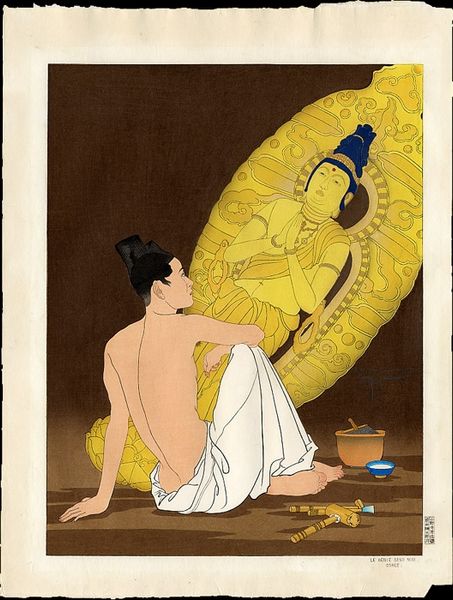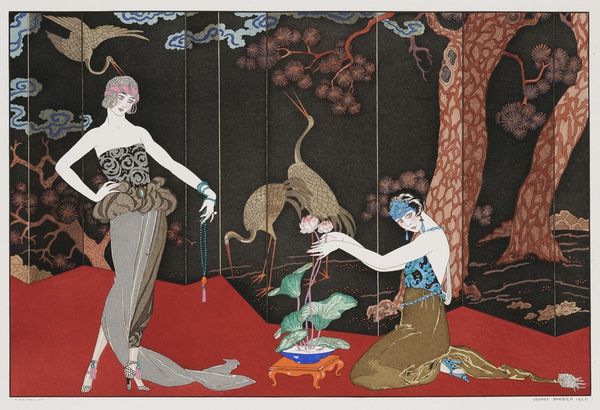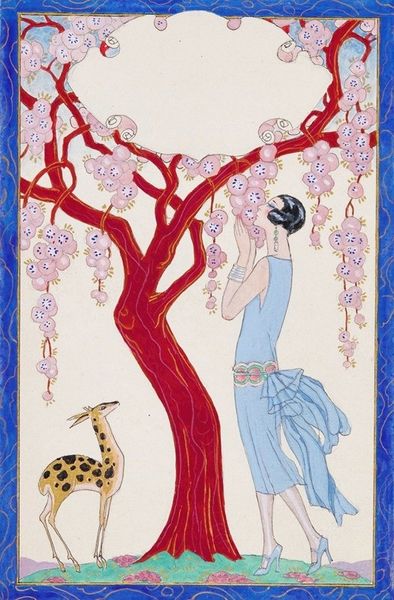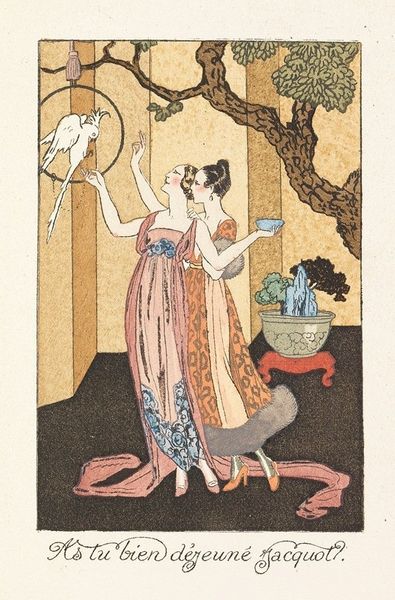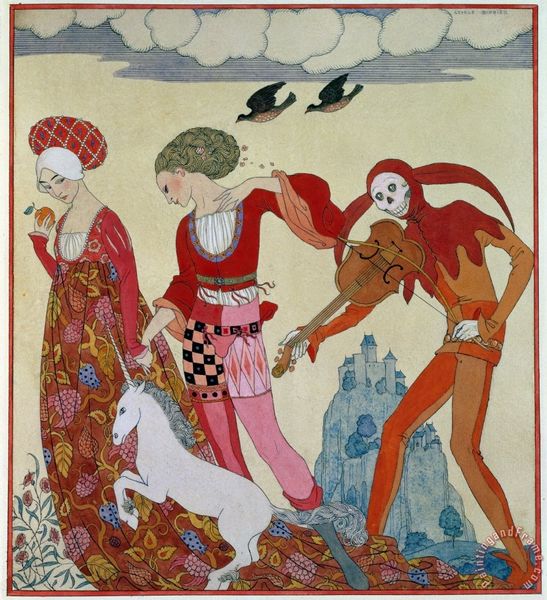
Copyright: Public Domain: Artvee
Editor: "Le Printemps," Spring, by George Barbier, made sometime between 1922 and 1926. It's stunning! It almost looks like an illustration from a fashion magazine, very elegant, and a little... otherworldly? The figures are posed so dramatically, surrounded by soft, almost dreamlike scenery. How do you interpret this work? Curator: "Le Printemps" perfectly captures the Art Deco era's fascination with both classical allegory and modern design. Consider its context: coming out of the devastation of World War I, there was a longing for beauty, luxury, and a reimagining of societal roles. What strikes you about the women depicted? Editor: Well, their stylized features and elaborate outfits definitely stand out, but they feel a bit removed, almost like statues. It’s like they're presenting spring rather than experiencing it. Curator: Precisely! They embody the "new woman" ideal emerging in the 1920s. Fashion became intertwined with social progress. Note their slender figures, short hairstyles, and sophisticated attire—signs of a move towards modernity, all presented in a way accessible to public imagination. The controlled artificiality reflected broader shifts in social behavior and presentation, with makeup and careful grooming playing important roles in visual identity. Do you think it promotes social commentary or does it simply reflects the style? Editor: That's interesting! I hadn't considered it in relation to the "new woman." It seems almost too pretty to be critical. It’s aspirational, I think. Curator: Indeed, its power lies in embedding new social identities within appealing, beautifully rendered imagery. Barbier creates a vision where progress feels luxurious and attainable, influencing perceptions and normalizing evolving societal norms, one fashionable illustration at a time. Editor: I see that! I walked in thinking this was "just" pretty and fashionable, but now I realize how many different messages could be perceived by different audiences. Thanks for highlighting that! Curator: A pleasure! Analyzing art through its historical and cultural influences allows us to uncover fascinating connections between art and social progression.
Comments
No comments
Be the first to comment and join the conversation on the ultimate creative platform.
